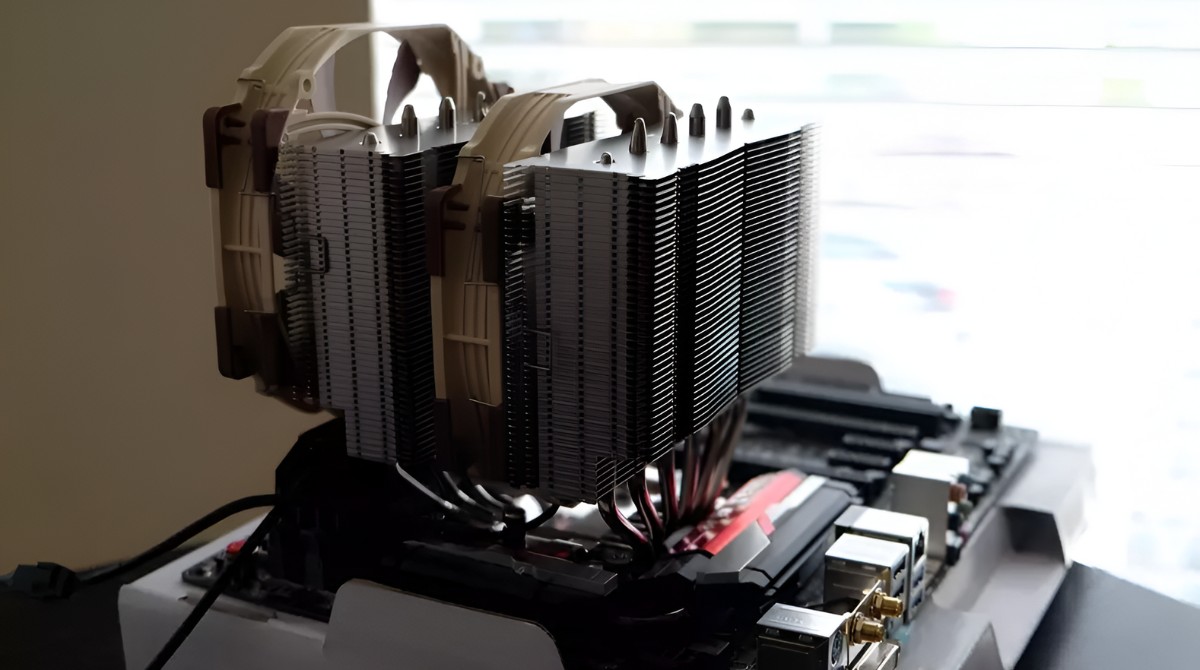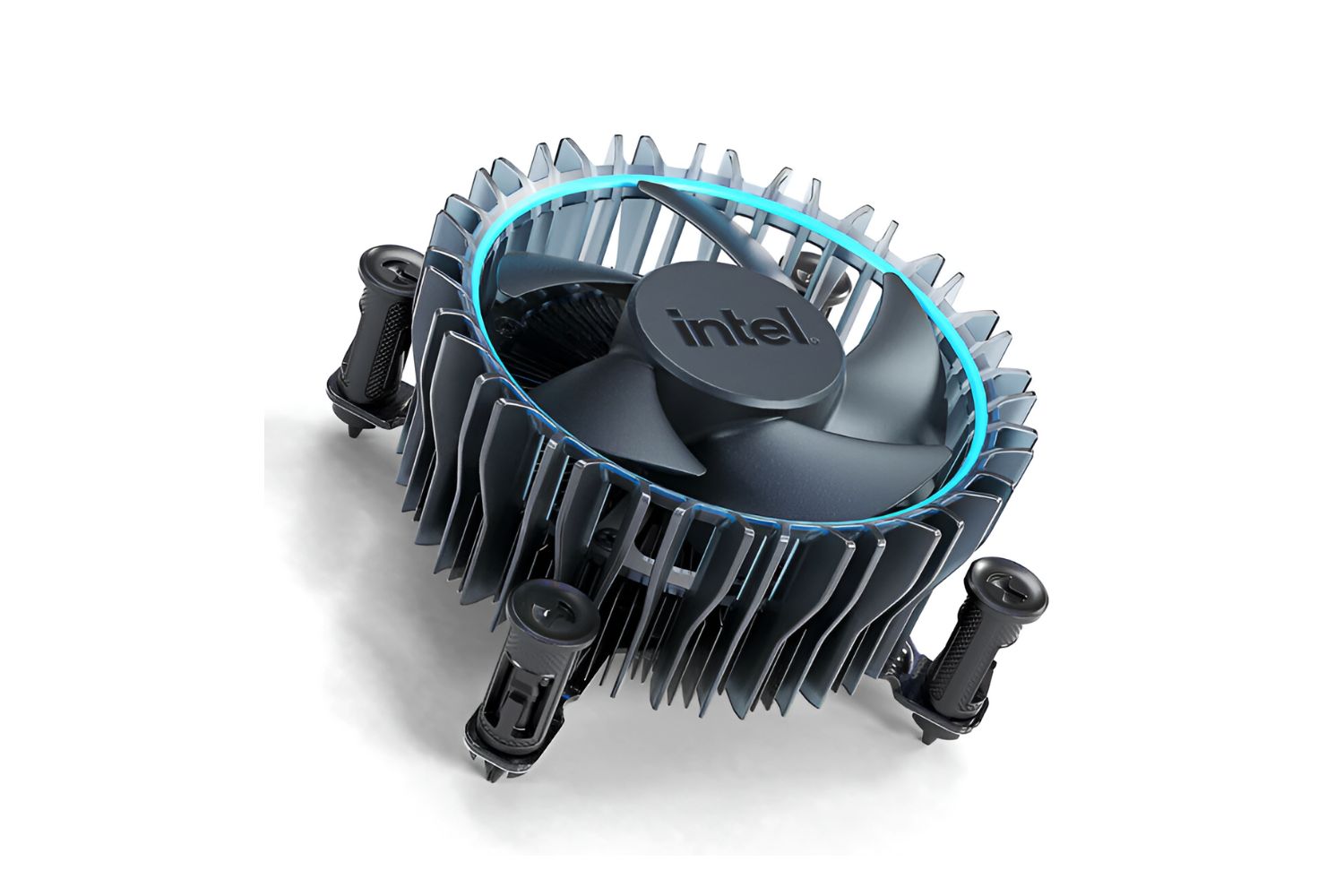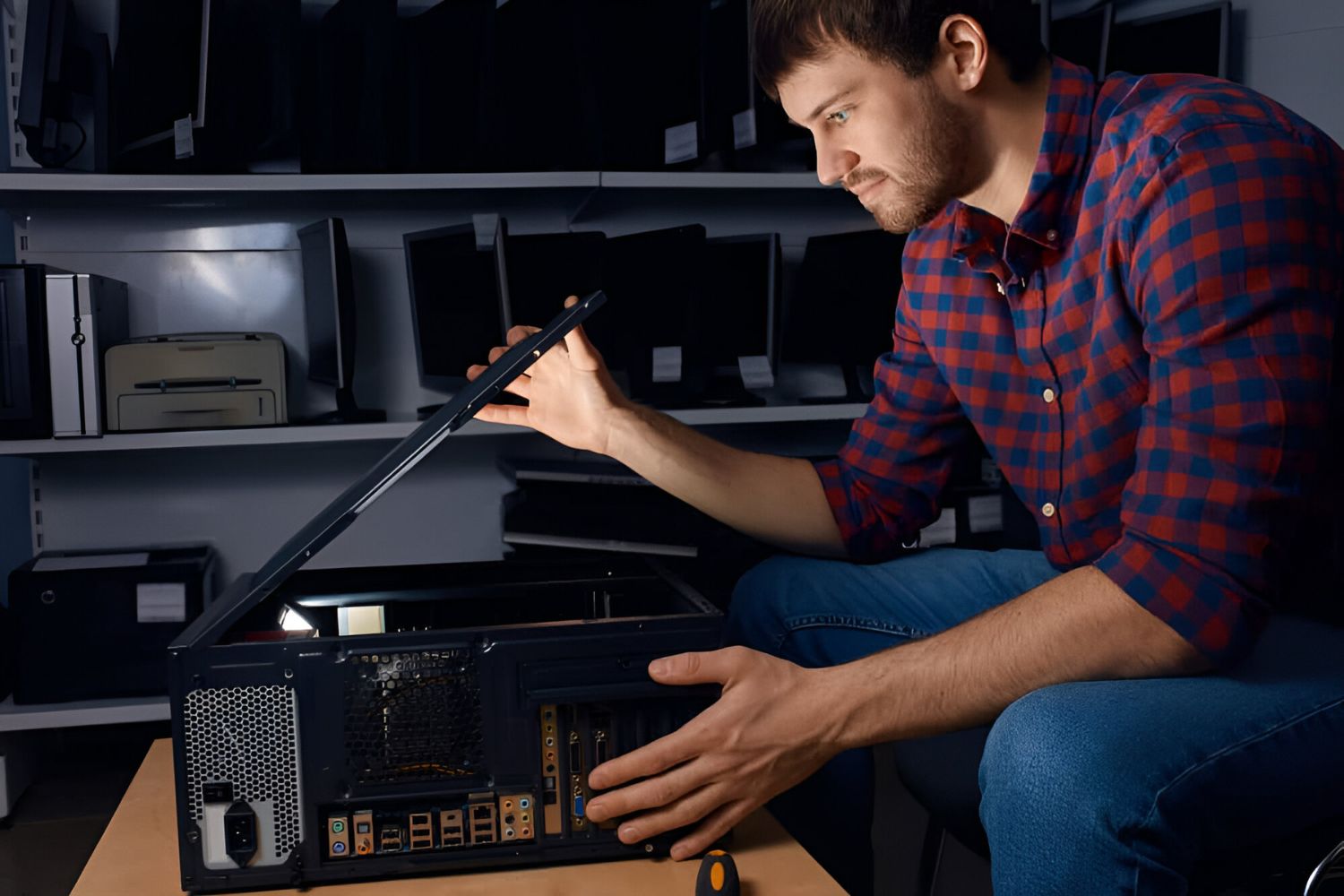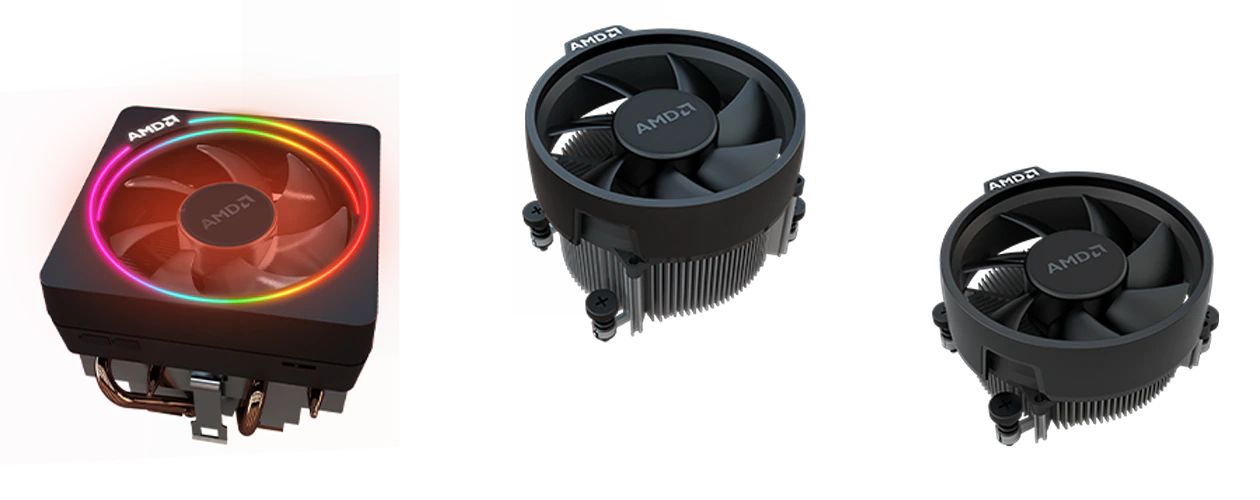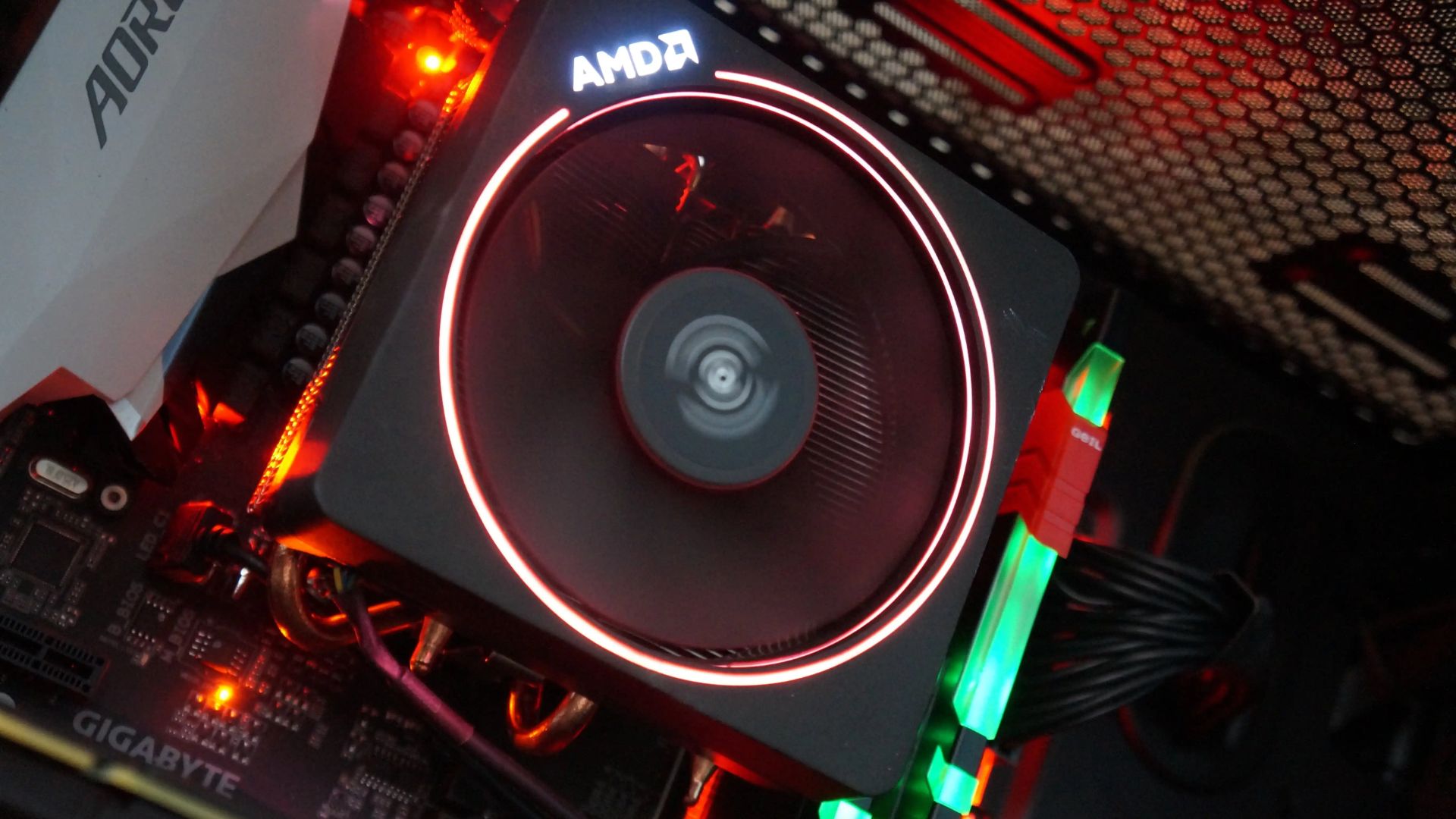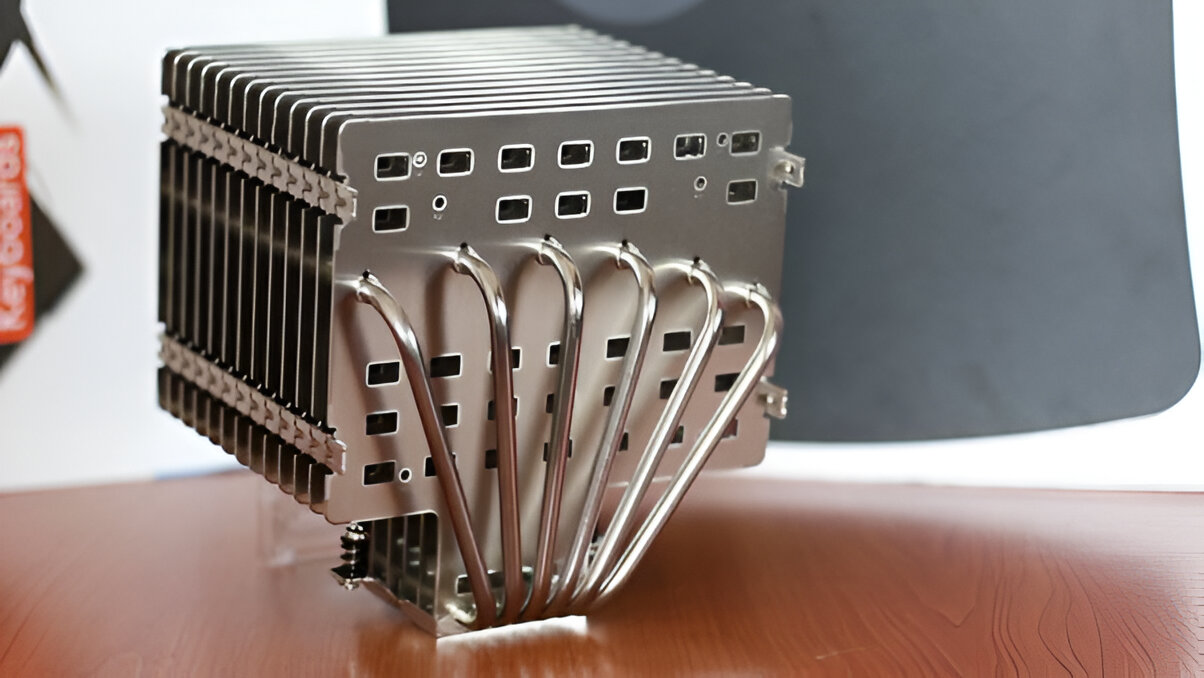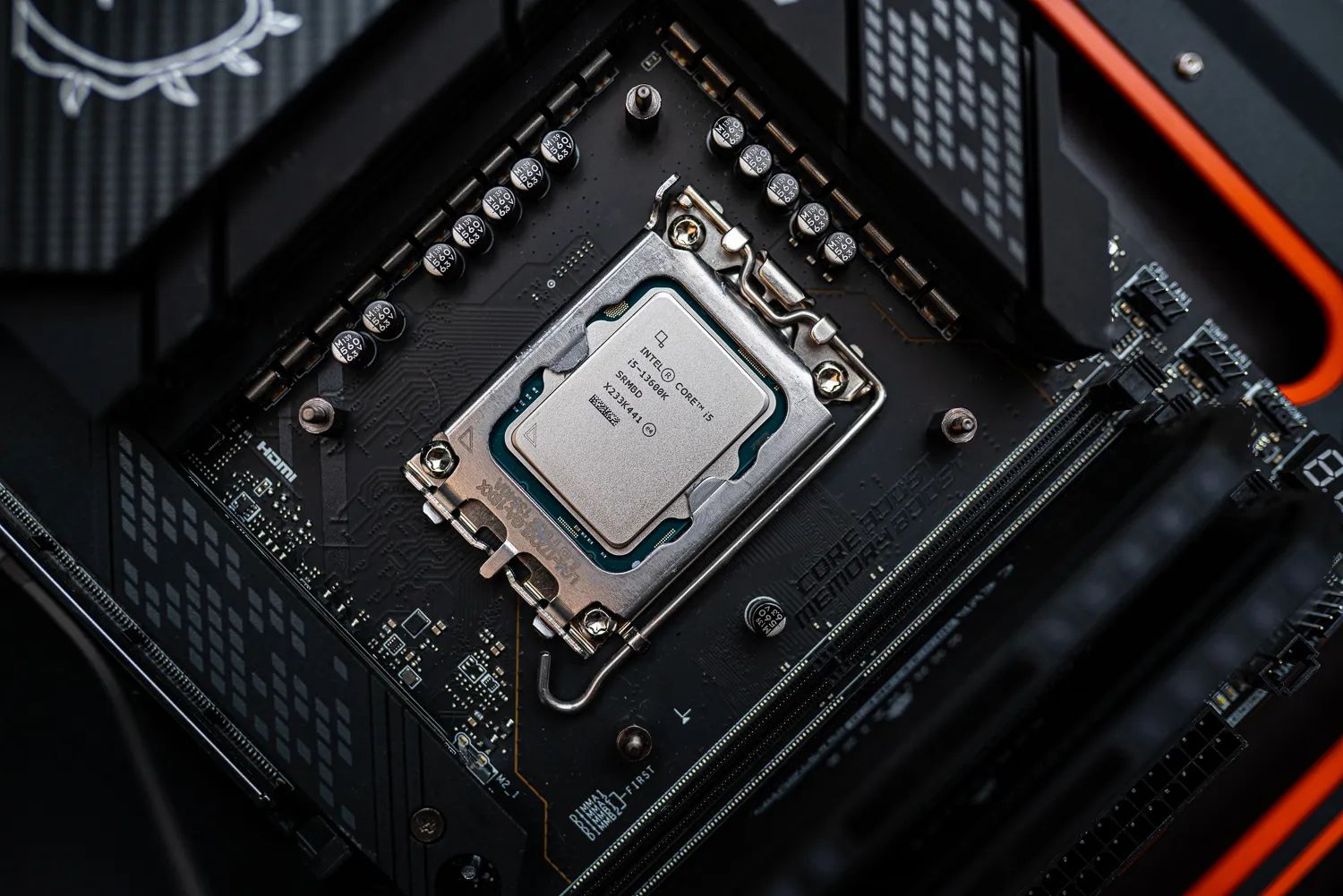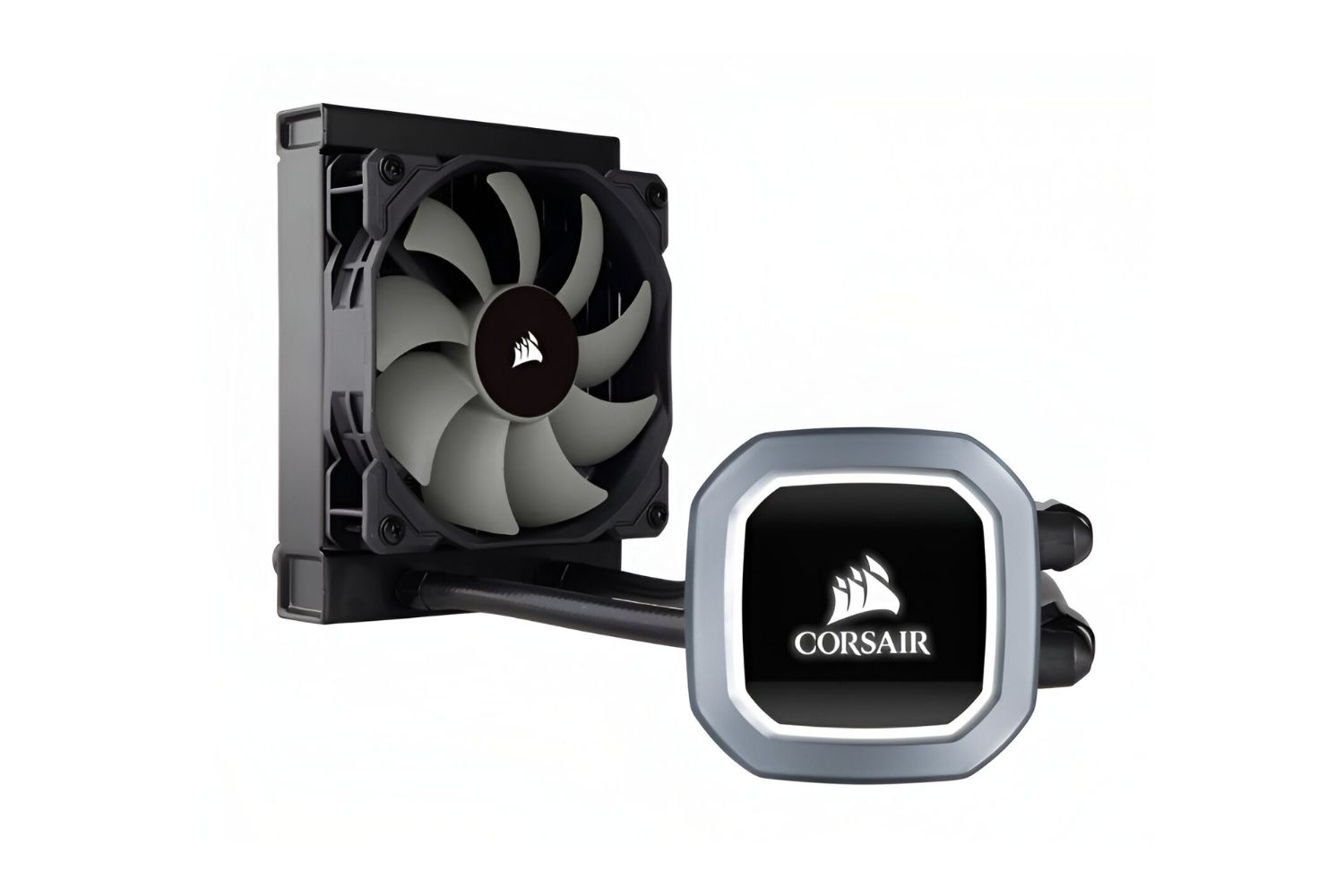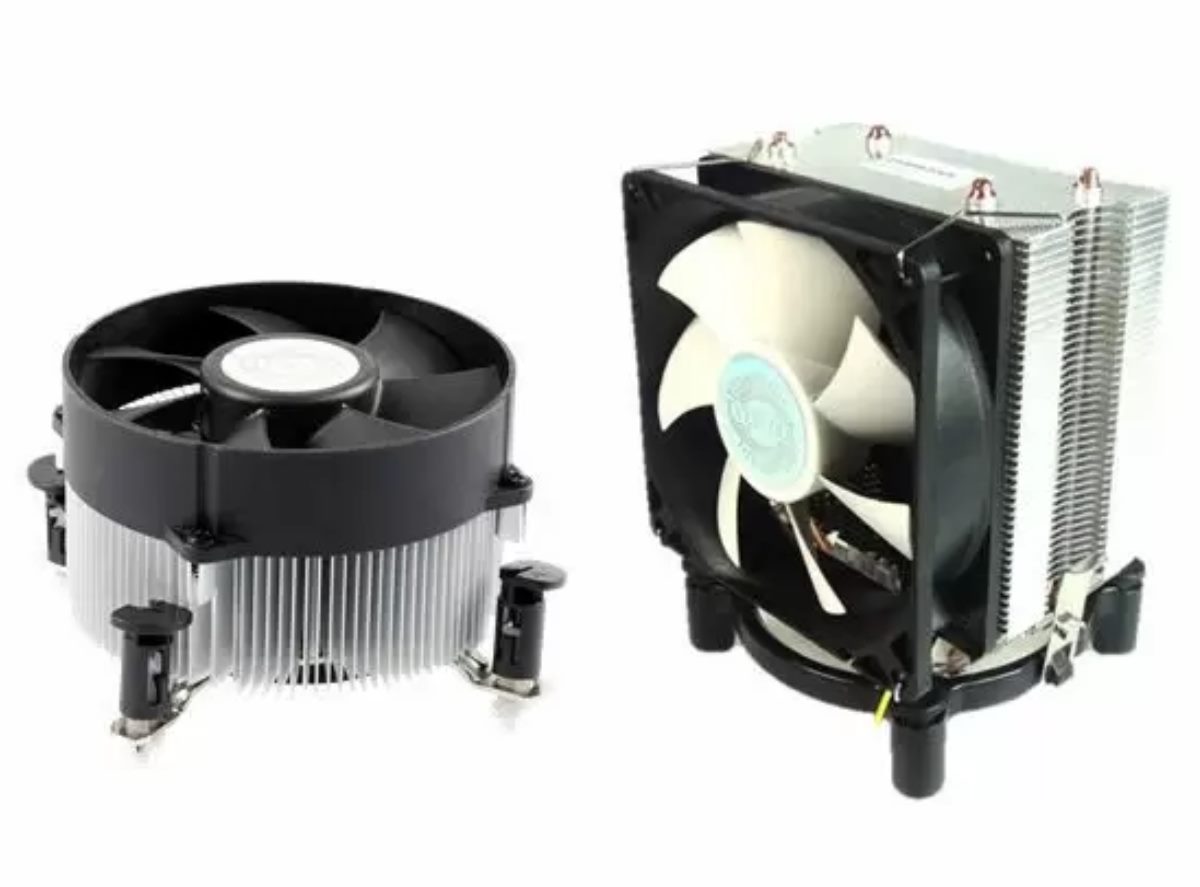Benefits of Using a Heavy CPU Cooler
When it comes to keeping your processor running at optimum temperature, a heavy CPU cooler can be a game-changer. Here are some of the key benefits you can expect when using a heavy CPU cooler:
- Improved Cooling Efficiency: One of the primary advantages of a heavy CPU cooler is its ability to dissipate heat more effectively. The weight of the cooler usually correlates with a larger heat sink, more heat pipes, and a larger cooling fan. This combination allows for better heat transfer and ultimately results in lower CPU temperatures.
- Enhanced Performance: By preventing the CPU from overheating, a heavy CPU cooler can significantly improve the performance of your system. When the processor is kept at a stable and lower temperature, it can operate at its maximum clock speed for extended periods without thermal throttling. This translates into smoother multitasking, faster loading times, and overall improved system performance.
- Extended Lifespan: Overheating is one of the major causes of premature component failure in PCs. By using a heavy CPU cooler, you can ensure that your processor remains within safe temperature limits, reducing the risk of damage caused by excessive heat. This can lead to an extended lifespan for your CPU, saving you money on costly repairs or replacements.
- Reduced Fan Noise: Heavy CPU coolers are often equipped with larger fans that spin at lower RPMs to provide effective cooling. This not only helps to keep temperatures down but also results in quieter operation. With a heavy cooler, you can enjoy a more peaceful computing experience without the constant whirring noise of an overworked stock cooler.
- Overclocking Potential: If you are an enthusiast or a gamer looking to push your system to its limits, a heavy CPU cooler is essential. Overclocking involves increasing the clock speed of your CPU, which generates more heat. With a heavy cooler, you can maintain stable temperatures even with the increased thermal load, allowing you to achieve higher overclocking frequencies.
By investing in a heavy CPU cooler, you can unlock these benefits and ensure that your processor stays cool and performs at its best. However, it’s important to consider the potential challenges and ways to support these coolers, which we’ll discuss in the following sections.
Common Issues with Heavy CPU Coolers
While heavy CPU coolers offer several advantages, they can also present some challenges. It’s important to be aware of these common issues and take necessary precautions to overcome them:
- Compatibility: Heavy CPU coolers are often larger and bulkier than stock coolers, which can cause compatibility issues with smaller computer cases. Before purchasing a heavy cooler, ensure that it will fit in your case and provide clearance for other components like RAM modules or graphics cards.
- Mounting Pressure: Due to their weight, heavy CPU coolers exert more pressure on the CPU socket during installation. This increased pressure can potentially cause damage if not installed correctly. Take care to follow the manufacturer’s instructions and use proper mounting techniques to ensure a secure and safe installation.
- Transportation Risks: If you frequently move your computer or participate in LAN parties, the weight and size of a heavy CPU cooler can make transportation challenging. Vigorous movements or mishandling can cause strain on the cooler, leading to potential damage. Consider removing the cooler before transporting your system or investing in additional support mechanisms, such as braces or reinforced brackets.
- RAM Clearance: Some heavy CPU coolers have large heatsinks that can obstruct the space around the CPU socket, including RAM slots. This can limit your options for using RAM modules with taller heatsinks. Before purchasing a cooler, check the RAM clearance specifications to ensure compatibility with your chosen memory modules.
- Difficulty of Installation: Heavy CPU coolers often require more time and effort to install compared to stock coolers. The process may involve removing the motherboard from the case, applying thermal paste, and securely mounting the cooler. Take your time, follow the installation instructions carefully, and consider seeking assistance if you are uncertain about the process.
While these issues can seem daunting, they can be easily overcome with proper planning, research, and careful installation. By taking these potential challenges into account, you can ensure a smooth experience when using a heavy CPU cooler and enjoy the benefits it provides.
Ways to Support a Heavy CPU Cooler
Supporting a heavy CPU cooler is crucial to ensure its stability and prevent potential damage to your system. Here are some effective ways to support a heavy CPU cooler:
- Backplate Installation: Most heavy CPU coolers come with a backplate that provides additional support. Ensure that the backplate is properly secured to the motherboard before installing the cooler. This helps distribute the weight of the cooler evenly and reduces the risk of warping or bending the motherboard.
- Securing Screws Tightly: When attaching the cooler to the CPU socket, make sure to tighten the mounting screws or brackets firmly. This ensures a secure and stable connection between the cooler and the socket. However, avoid overtightening, as it can cause damage to the CPU or motherboard.
- Using Support Brackets: Some heavy CPU coolers may come with additional support brackets or braces. These brackets help alleviate stress on the motherboard and reinforce the cooler’s stability. Follow the manufacturer’s instructions to properly install and secure these support brackets.
- Vertical Mounting: If your computer case supports it, consider using a vertical CPU cooler mounting bracket. This type of bracket mounts the CPU cooler vertically instead of horizontally, distributing the weight more evenly and reducing strain on the motherboard. Consult your case’s user manual or check compatibility with the manufacturer before opting for this solution.
- Upgrading the Case: If you frequently encounter issues with heavy CPU cooler compatibility or stability, it may be worth considering upgrading to a larger computer case. A spacious case provides better clearance and airflow, ensuring that the heavy cooler fits comfortably and reducing the risk of damage.
By implementing these support measures, you can effectively reinforce your heavy CPU cooler and minimize the potential risks associated with its weight. Remember to always refer to the manufacturer’s instructions and consult online resources for specific installation guidelines tailored to your cooler and motherboard model.
Alternative Cooling Solutions for Heavy CPU Coolers
While heavy CPU coolers are effective at keeping your processor cool, they may not always be the ideal solution for every situation. Here are some alternative cooling options that you can consider for heavy CPU coolers:
- Liquid Cooling: Liquid cooling, also known as AIO (All-in-One) cooling, is a popular alternative to air cooling for heavy CPU coolers. It involves the use of a liquid-filled radiator and pump system to dissipate heat from the processor. Liquid cooling offers excellent cooling performance, especially for overclocked systems, and can handle the heat generated by heavy CPUs with ease.
- High-Performance Air Coolers: If a heavy CPU cooler is too bulky or doesn’t fit your system, you can opt for high-performance air coolers that are more compact in size but still offer excellent cooling capabilities. Look for air coolers with a high TDP (thermal design power) rating to ensure they can handle the heat output of your CPU effectively.
- Undervolting and Underclocking: If your heavy CPU cooler struggles to maintain low temperatures, you can consider undervolting or underclocking your CPU. Undervolting reduces the voltage supplied to the CPU, which decreases heat output, while underclocking reduces the CPU’s clock speed. These methods can help reduce the thermal load on the CPU and alleviate the strain on the cooler.
- Additional Case Fans: Increasing the airflow within your computer case can help improve cooling for heavy CPU coolers. Adding additional case fans can enhance the overall airflow and assist the CPU cooler in dissipating heat more effectively. Ensure proper placement of the fans to create a balanced airflow path and avoid obstructing the cooler’s movement of air.
- Cable Management: Proper cable management within your computer case can contribute to better airflow, which in turn helps cool the CPU more efficiently. Organize and secure cables using cable ties or Velcro straps to minimize obstructions in front of or around the CPU cooler. This allows for unobstructed airflow and helps the cooler perform optimally.
When choosing an alternative cooling solution, consider factors such as budget, space restrictions, and cooling requirements. Each option has its advantages and trade-offs, so research thoroughly and select the solution that best fits your needs and system configuration.
Tips for Installation and Maintenance of Heavy CPU Coolers
Installing and maintaining a heavy CPU cooler requires careful attention to ensure proper functionality and longevity. Here are some essential tips to keep in mind:
- Read the Manufacturer’s Instructions: Before starting the installation process, thoroughly read the manufacturer’s instructions provided with the CPU cooler. Each cooler may have specific requirements and installation steps that are crucial to follow for optimal performance and safety.
- Apply Thermal Paste Correctly: Proper application of thermal paste is vital for efficient heat transfer between the CPU and the cooler. Follow the recommended method of applying thermal paste, such as applying a small pea-sized drop in the center of the CPU, to ensure even coverage. Avoid over-applying the thermal paste, as it can lead to poor heat dissipation.
- Secure the Cooler Firmly: Ensure that the heavy CPU cooler is securely fastened to the CPU socket using the provided mounting mechanism. Use the appropriate amount of pressure to tighten the screws or brackets—but be cautious not to overtighten, as it can damage the motherboard or CPU.
- Regularly Clean and Dust the Cooler: Over time, dust and debris can accumulate on the heatsink and fan blades of the CPU cooler, hindering its cooling performance. Regularly clean the cooler using compressed air or a soft brush to remove the buildup. This helps maintain optimum airflow and prevents overheating.
- Monitor and Record Temperatures: Keep an eye on the CPU temperatures using software utilities or BIOS monitoring tools. This allows you to detect any abnormal temperature spikes and take necessary action promptly. Also, record temperature readings periodically to track any changes and identify potential cooling issues.
- Consider Regular Reapplication of Thermal Paste: Over time, the thermal paste between the CPU and cooler may dry out or deteriorate, compromising heat transfer. Consider reapplying thermal paste every couple of years or when you notice a significant increase in CPU temperatures. Follow the manufacturer’s guidelines for removing the old paste and applying a new layer.
- Perform Regular System Maintenance: In addition to maintaining the CPU cooler, ensure that your overall system is regularly cleaned and maintained. This includes cleaning the case, fans, and filters, as well as monitoring other components such as the power supply and graphics card. Proper system maintenance contributes to efficient cooling and overall system stability.
By following these tips, you can ensure a successful installation and proper maintenance of your heavy CPU cooler. These practices help extend its lifespan, maximize cooling efficiency, and keep your system running smoothly.
Important Considerations When Using a Heavy CPU Cooler
Using a heavy CPU cooler can provide excellent cooling performance, but it’s essential to be aware of certain considerations to ensure its proper usage. Here are some important factors to keep in mind:
- System Compatibility: Before purchasing a heavy CPU cooler, ensure that it is compatible with your system. Check the socket type, motherboard dimensions, and case dimensions to ensure a proper fit. Additionally, consider the clearance for other components such as RAM modules and graphics cards to avoid any conflicts.
- Power Supply Unit Position: The position of your power supply unit (PSU) can affect the installation of a heavy CPU cooler. In cases where the PSU is mounted at the top, it may interfere with the cooler’s installation or obstruct airflow. Consider choosing a case with a PSU position that allows for easy installation and optimal cooling for your heavy CPU cooler.
- Case Airflow: Heavy CPU coolers generate significant heat, so proper case airflow is crucial. Make sure your case has adequate airflow and that the CPU cooler is getting a sufficient supply of cool air. Consider adding additional case fans or optimizing fan placement to enhance cooling performance.
- Noise Considerations: Heavy CPU coolers with larger fans tend to generate more noise compared to stock coolers. Consider the noise levels of your chosen cooler and whether it aligns with your noise tolerance preferences. Look for coolers with noise-dampening features or adjustable fan speeds if a quiet operation is important to you.
- Weight Distribution: Heavy CPU coolers place extra stress on the CPU socket and motherboard. Ensure that your motherboard is capable of handling the weight and stress caused by the cooler. If necessary, reinforce the motherboard with additional support mechanisms, such as backplates or support brackets, to distribute the weight evenly and minimize the risk of damage.
- Transportation and System Stability: If you frequently move your computer or participate in LAN parties, consider the stability and transportation risks associated with a heavy CPU cooler. Ensure that the cooler is properly secured and supported to prevent damage during transportation. Consider removing the cooler or using additional support mechanisms to minimize strain on the motherboard and cooler during movement.
By considering these important factors, you can ensure that your heavy CPU cooler is used effectively in your system. These considerations help promote stability, compatibility, and optimal cooling performance, ensuring a smooth and reliable computing experience.
Recommended Heavy CPU Coolers for Different PC Builds
Choosing the right heavy CPU cooler for your PC build is crucial for maintaining optimal temperatures and performance. Here are some recommended CPU coolers based on different PC builds:
- Mid-Range Gaming Build: For mid-range gaming builds, the Cooler Master Hyper 212 Evo is an excellent choice. It offers a good balance between performance and affordability, with its direct-contact heat pipes and quiet operation. It can handle the thermal demands of mid-range processors without breaking the bank.
- High-End Gaming/Overclocking Build: If you’re building a high-end gaming or overclocking rig, the Noctua NH-D15 is highly recommended. It features a dual tower design with six heat pipes and two premium-grade fans. The NH-D15 provides exceptional cooling efficiency and low noise levels, making it ideal for demanding tasks and extreme overclocking.
- Small Form Factor Build: In compact form factor builds, space is often a limitation. The be quiet! Dark Rock TF is a top-down style CPU cooler that offers an impressive cooling capacity within a compact footprint. Its high cooling performance, low profile design, and virtually silent operation make it a great choice for small form factor systems.
- Workstation/Content Creation Build: For workstation or content creation PCs, the Corsair H115i Pro RGB is recommended. This all-in-one liquid cooler offers excellent cooling performance with its large radiator and dual 140mm fans. It can handle the heat output of high-performance processors used for demanding tasks like video editing, 3D rendering, and complex simulations.
- Silent Build: If noise reduction is a top priority, the be quiet! Dark Rock Pro 4 is an exceptional choice. This dual-tower CPU cooler features two virtually silent fans and a massive heatsink, providing excellent cooling performance while maintaining near-silent operation. It’s a perfect fit for those seeking a silent and efficient cooling solution.
These are just a few recommendations for heavy CPU coolers, but there are many options available from different manufacturers. When choosing a cooler, consider factors such as your budget, cooling requirements, case compatibility, and noise tolerance. Research and read reviews to ensure the cooler aligns with your specific needs and preferences.
Frequently Asked Questions about Heavy CPU Coolers
Here are answers to some common questions regarding heavy CPU coolers:
- Q: Are heavy CPU coolers compatible with all motherboards?
A: Heavy CPU coolers have varying compatibility based on factors such as socket type, motherboard dimensions, and RAM clearance. Before purchasing a cooler, check its compatibility with your specific motherboard model to ensure a proper fit. - Q: Will a heavy CPU cooler affect RAM installation?
A: Some heavy CPU coolers have large heatsinks that can obstruct the space around the CPU socket, including RAM slots. Before purchasing a cooler, check its RAM clearance specifications to ensure compatibility with your selected RAM modules. - Q: Do heavy CPU coolers require additional support?
A: In most cases, heavy CPU coolers come with the necessary support mechanisms, such as backplates or support brackets, to ensure stability and prevent strain on the motherboard. Follow the manufacturer’s instructions to install these supports correctly. - Q: Will a heavy CPU cooler make my system noisier?
A: Heavy CPU coolers are often equipped with larger fans that can potentially generate more noise than stock coolers. However, many heavy coolers are designed with noise-dampening features and optimized fan blades to minimize noise levels. Choose a cooler with a noise level that aligns with your preferences. - Q: How do I properly install a heavy CPU cooler?
A: Installing a heavy CPU cooler requires careful attention. Read and follow the manufacturer’s instructions carefully. Typically, it involves attaching a backplate, applying thermal paste, mounting the cooler, and securely tightening the screws or brackets. Take your time and ensure that the cooler is properly and securely installed. - Q: Do heavy CPU coolers require liquid cooling?
A: Heavy CPU coolers can be air coolers or liquid coolers. Air coolers use a heatsink and fan combination for heat dissipation, while liquid coolers use a pump and radiator system. Both options are capable of effectively cooling heavy CPUs. The choice between air and liquid cooling depends on personal preference, system requirements, and available space. - Q: Can I transport my PC with a heavy CPU cooler?
A: When transporting a PC with a heavy CPU cooler, it’s important to take precautions to prevent damage. If possible, remove the cooler before transportation or use additional support mechanisms, such as braces or reinforced brackets, to minimize strain on the cooler and motherboard during movement.
These FAQs address some common concerns about heavy CPU coolers. If you have any further questions or specific concerns, consult the manufacturer’s documentation or seek advice from knowledgeable individuals or communities in the PC-building community.
Conclusion
Using a heavy CPU cooler can provide numerous benefits, including improved cooling efficiency, enhanced system performance, and extended lifespan of your processor. However, it’s important to consider the common issues and take necessary precautions to support the heavy cooler effectively.
When installing a heavy CPU cooler, ensure compatibility with your system and follow the manufacturer’s instructions carefully. Properly securing the cooler, maintaining good cable management, and monitoring temperatures are essential for optimal performance and longevity.
If a heavy CPU cooler poses challenges, there are alternative cooling solutions available, such as liquid cooling or high-performance air coolers. Additionally, regularly cleaning the cooler, reapplying thermal paste when needed, and performing overall system maintenance contribute to its efficiency.
Important considerations include system compatibility, PSU position, case airflow, noise levels, weight distribution, and transportation risks. Considering these factors will ensure a stable and well-functioning system with a heavy CPU cooler.
By following the recommended tips and considerations outlined in this article, you can make informed decisions when selecting, installing, and maintaining a heavy CPU cooler. Remember that individual needs and system requirements may vary, so it’s important to research and choose the right cooler that suits your specific circumstances.







